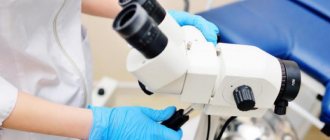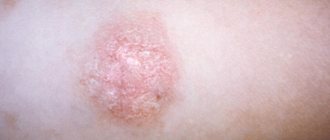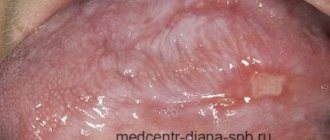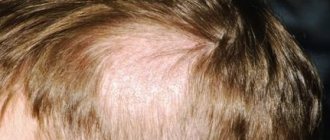Causes of the disease
For most people, the herpes zoster virus first enters the body in childhood or adolescence. Chickenpox affects more than half of the population by adulthood. Healing and developing immunity to it does not mean that the pathogen has left the body. Like all types of herpes, this one persists in the nerve endings of the spinal cord and brain for life. Recurrence of chickenpox in these cases is prevented by the specific defense of the immune system. In rare cases: when the body is weakened or due to congenital genetic defects, the disease may return. In adults, activation of herpes provokes a more complex pathology that affects not only the skin, but also the nervous system.
Shingles, unlike chickenpox, occurs quite rarely: no more than 15 cases are recorded per 100 thousand population. The disease occurs mainly in the cold season. The virus tolerates frost well, but is not resistant to extreme heat. The majority of those affected are middle-aged and elderly people. Shingles is an infectious pathology, but it develops not as a result of the transmission of a pathogen from the outside, but due to the activation of what is already inside.
Main provoking factors:
- state of immunodeficiency in HIV carriers;
- severe stress;
- weakening of the body after transplantation of internal organs and other complex surgical operations;
- long-term use of suppressor drugs for rheumatoid arthritis and other autoimmune diseases;
- chemotherapy and radiation treatment for cancer tumors;
- diseases of the hematopoietic system;
- Hormone replacement therapy for endocrine disorders.
The mechanism of development of herpes zoster is not well understood. It is known that the Herpes zoster virus causes inflammatory reactions in the membranes and roots of spinal nerves, as well as the adjacent skin.
What are antiviral drugs used for?
The goal is to exclude the development of complications. Antiherpetic treatment helps the ulcers heal quickly and improves the patient's condition.
The course of treatment and dosage of medications is determined by the doctor taking into account the general condition of the patient. On average, treatment time does not exceed 10 days.
If a gangrenous form with a bacterial infection develops, antibiotics, immunomodulators, physiotherapeutic procedures and vitamins are prescribed.
When it comes to treating rashes, there are different opinions regarding the use of drying agents. In any case, they should be used with caution so as not to worsen the condition of the skin by burning.
Hormonal medications should not be used as they suppress the immune system.
Treatment of the disease in elderly patients is not always successful, since antiviral drugs are not justified.
Signs of Shingles
The clinical picture of the disease combines symptoms characteristic of chickenpox and signs of damage to the nervous system. The development of herpes zoster usually begins with a fever:
- temperature rises: up to +37.5–38°C;
- suffer from headaches, muscle weakness;
- sometimes sweating increases and appetite worsens.
- In children with herpes zoster, a sore throat, cough, and sputum production from the respiratory tract appear.
The prodromal state resembles ARVI and lasts several days. Then the heat may increase, itching and burning may appear in the spine and peripheral nerve trunks throughout the body - at the site of future rashes. After another 1–2 days, a rash appears in the painful areas: clearly defined, dense red nodules measuring 2–5 mm. These are exanthemas formed due to inflammation of nerve endings.
Within 1–2 days, vesicles appear against the background of the rash: serous capsules up to 7 mm in diameter with swollen red edges. When scratched or accidentally damaged, yellowish liquid contents are released from them. At the same time, some patients experience enlargement and pain in the cervical and axillary lymph nodes. After opening the membranes, the vesicles dry out and become crusty. When the scabs fall off, small red or brown spots remain in their place for a while.
The nature of skin lesions with herpes zoster resembles the symptoms of chickenpox. The only difference is the location of the nodules - not chaotic, but along the nerve trunks. At the same time, healing and new painful blisters are present on the integument.
Signs of damage to the nervous system:
- decreased sensitivity, numbness of the affected areas of the body;
- sudden sharp pain, reminiscent of attacks of intercostal neuralgia, cholecystitis or renal colic.
At night the pain intensifies.
The acute period of the disease lasts 2–3 weeks. All this time, fever, headaches and other signs of malaise persist. Recovery comes gradually. When all the vesicles dry out, the pigmented spots in their place fade within a few days, and the general physical condition also normalizes.
In people with severe immune deficiency, shingles occurs in a generalized form:
- the blisters merge into extensive band formations, leaving deep necrotic scabs;
- the rash affects the entire body and mucous membranes.
With a complicated process, secondary infections from the addition of bacterial microflora are possible. The course of the disease in such cases drags on for several months. Skin lesions leave deep scars.
Period of rash
The type of rash depends on the severity of the disease. At the initial stage, the rashes look like small pink spots located on healthy skin.
If the process develops typically, then the next day they are replaced by bubbles with a clear liquid - grouped vesicles. After 3 days, their contents become cloudy. The rash occurs in spurts, with breaks of several days.
If a severe gangrenous form develops, the filling of the vesicles may be mixed with blood. It seems that the bubbles move to another place, located around the body.
If the form of inflammation is mild, the manifestation of the disease can only be neurological in nature, when the patient feels pain, but there is no rash. This is herpetic neuralgia.
Prevention
Disease prevention – strengthening the immune system:
- healthy lifestyle;
- hardening;
- regular physical activity;
- proper nutrition;
- proper rest, sleep.
Despite the fact that water procedures during the treatment of herpes zoster are contraindicated, the complication of the disease is caused by poor hygiene. Therefore, it is important:
- avoid taking hot baths - prefer a warm, short shower;
- exclude washcloths, cosmetics and anything that can irritate the skin;
- just blot the inflamed areas;
- use 2 towels - one for healthy skin, the other for infected skin (change daily).
If the disease progresses, you should limit yourself to wet wipes, and do not wet the damaged skin. When the ulcers turn into crusts, you can take a shower.
In any case, treatment is prescribed individually and exclusively by a doctor.
IMPORTANT:
Self-medication can aggravate the disease and provoke life-threatening consequences.
Other articles by the author
- Pyoderma
- Herpes zoster
- Pityriasis rosea
- Shingles
Treatment
Drug treatment:
- Analgesics such as acetaminophen (Tylenol, Panadol, Tempra), and nonsteroidal anti-inflammatory drugs (NSAIDs) such as aspirin, ibuprofen, naproxen, and Celebrex.
- Opioids – Your doctor may prescribe opioid analgesics for severe pain that is not controlled by regular analgesics, but these medications should be used with caution due to the risk of serious side effects. For example: This group includes tramadol or oxycodone. Some studies suggest that oxycodone may also help reduce allodynia.
- Antidepressants – These medications are effective in treating depression. In addition, they improve sleep (for example, amitriptyline, Cymbalta, etc.).
- Anticonvulsants – Drugs in this group are intended mainly for the prevention of convulsive conditions. But sometimes they are quite effective for postherpetic neuralgia (Neurontin, Lyrica, Topamax, carbamazepine).
- Blocks - Injections of corticosteroid into paravertebral points sometimes lead to a significant reduction in pain.
- Local painkillers - ointments, gels containing analgesics or anesthetics (lidocaine). Helps temporarily reduce symptoms.
Consequences
A quick and painless recovery from herpetic lichen is due to the general good health of the patient. A young and strong body with normal immunity copes better with the virus. In general, this disease rarely goes away without any complications - in only 30% of cases. Neuralgic pain after a virus infection can last from six months to several years.
The consequences of herpes zoster can be very serious:
- transverse myelitis with transition to motor paralysis;
- heart failure;
- progression of oncological processes;
- Ramsay-Hunt symptom: paralysis of facial muscles, complete or partial hearing loss;
- damage to the oculomotor nerves;
- brain lesions: encephalitis, serous meningitis, meningoencephalitis;
- blindness caused by retinal necrosis.
Improperly treated herpes zoster can develop a relapsing course with subsequent coverage of other nerve trunks. In addition to a neurologist and a skin clinic, you should definitely visit an immunologist for proper correction of immunity.
Folk remedies
All of the following recipes for plant herbs (optional) are prepared as follows: leave one tablespoon of herbs in a glass of boiling water for 20-30 minutes, cool and consume 1/2-1/3 cup 2-3 times a day to relieve mild pain and nervous excitability , as well as for insomnia.
- Valerian root, mint leaves - 3 parts each, watch leaves - 4 parts.
- Mint leaf, watch leaf - 2 parts each, valerian root and hop cones - 1 part each.
- Fennel fruits and chamomile flowers - 1 part each, marshmallow root, licorice root, wheatgrass rhizome - 2 parts each (recommended for children).
- Valerian root – 2 parts, chamomile root – 3 parts, caraway fruit – 5 parts.
- Valerian root, hawthorn flowers, mint leaves, mistletoe herb, motherwort herb - 1 part each.
- Valerian root, motherwort herb, green oat straws - 1 part each.
- Tatar leaves, green oat straw, caraway fruits - 2 parts each, hawthorn flowers, chamomile flowers - 1 part each.
- Mint leaves - 1 part, heather grass, lemon balm leaves - 2 parts each, valerian root - 4 parts.
- Heather leaves, cudweed herb, thyme herb, valerian root - 2 parts each, chicory root - 1 part.
- Motherwort grass, cudweed grass, heather grass - 2 parts each, hop cones, caraway fruits - 1 part each.
The use of medicinal pharmacopoeial herbs is justified in mild forms of the pathogenesis of herpes zoster.
Vaccination
A live vaccine known as Zostavax has been proposed against the occurrence of the disease.
This vaccine rarely causes side effects but is contraindicated in immunocompromised patients and may not be effective in patients taking antiviral drugs active against Varicella zoster virus. From an economic point of view, it is advisable to use it for patients over 60 years of age.
A Cochrane Library systematic review of eight randomized, placebo-controlled trials involving 52,269 participants found that the Zostavax vaccine in older adults prevented one episode of herpes zoster in every 70 people vaccinated, meaning it was effective in reducing the risk of herpes zoster by almost 50%. Side effects caused by the vaccine were mainly mild to moderate symptoms at the injection site[16].
Diagnosis
If pain occurs after an episode of rashes or sensory disturbances, you should consult a doctor. Diagnosis is based on medical history, examination and laboratory tests (necessary to exclude other diseases). Instrumental diagnostic methods (CT, MRI, EMG, ultrasound) are prescribed only if there is a need for differential diagnosis.
Forecast
Exercise therapy, physiotherapy and drug treatment in most cases help reduce symptoms and restore quality of life. Especially if treatment is carried out in a timely manner.








